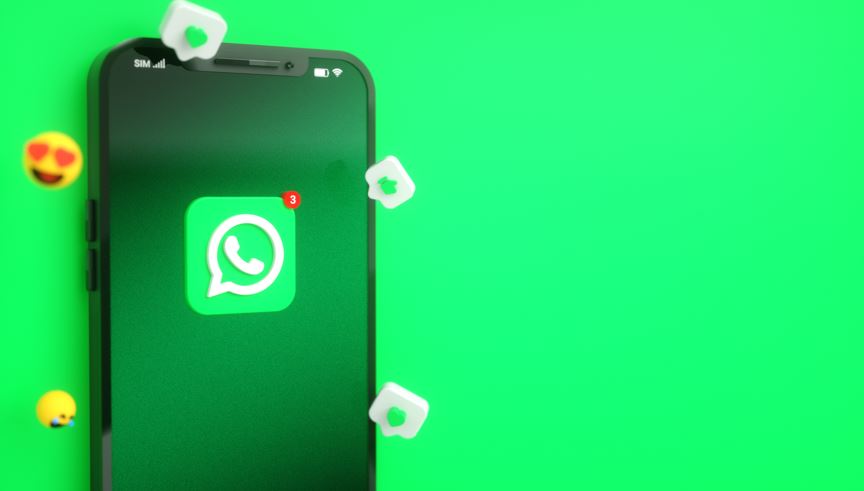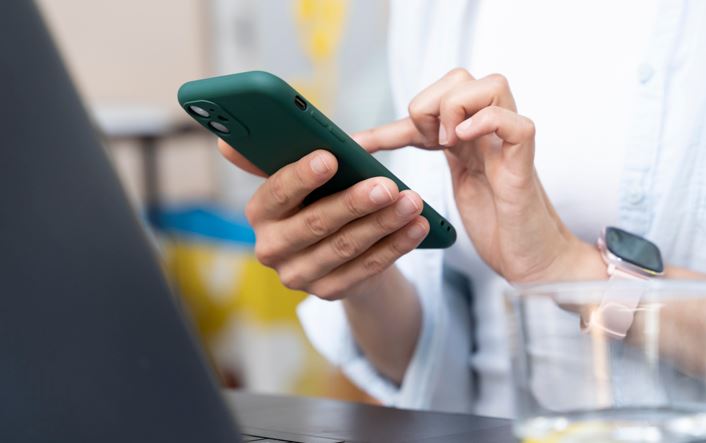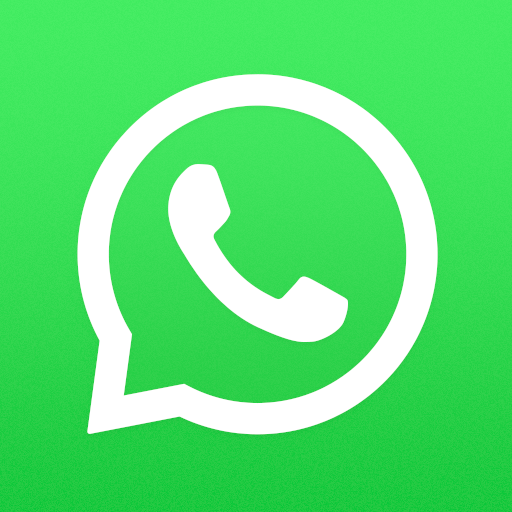How to delete WhatsApp? Quick stepbystep instructions
17th May 2024
Jeff Patton
Are you considering deleting WhatsApp but unsure of how to do it? Whether it's due to privacy concerns, a desire to disconnect from social media, or simply wanting to try a different messaging app, this article will guide you through the process.
We'll provide step-by-step instructions on how to delete WhatsApp on both Android and iPhone, as well as what happens when you delete your account.
Stay tuned to learn how to reinstall WhatsApp if you change your mind.
Why Would Someone Want To Delete WhatsApp?
There are various reasons why someone might want to delete WhatsApp, one of the most popular messaging apps globally. Concerns about privacy, desire to disconnect from social media, or switching to a different messaging platform are some common motivations for deleting a WhatsApp account.
Privacy concerns related to WhatsApp have been a significant driver for many users to seek alternatives. With increasing awareness of data security and privacy breaches, individuals are becoming more cautious about sharing personal information on platforms like WhatsApp.
The need to step back from the constant digital interactions that social media fosters is another reason why people opt to delete their WhatsApp accounts. Taking a break from the digital noise and focusing on more meaningful connections is a growing trend among users.
The emergence of alternative messaging services offering enhanced privacy features and different user experiences is enticing individuals to explore and switch platforms to find the one that best aligns with their communication preferences.
Concerns About Privacy
One of the primary reasons individuals consider deleting WhatsApp is due to concerns about their privacy and data security.
As online privacy becomes an ever more critical issue in today's digital age, users are becoming increasingly wary of how their personal data is handled by communication platforms like WhatsApp. The impact of recent data breaches and privacy scandals has heightened these concerns, leading many to reassess the security of their information online.
The revelations surrounding data mining and targeted advertising have also contributed to a growing sense of unease among users, prompting them to take action to protect their sensitive data from potential misuse or unauthorized access.
Wanting to Disconnect from Social Media
For some individuals, the desire to disconnect from the realm of social media leads them to consider deleting their WhatsApp accounts. Whether aiming to reduce online presence, limit communication channels, or simply take a break from constant connectivity, deleting WhatsApp can be a step towards a more detached digital lifestyle.
By removing WhatsApp, individuals can create a sense of freedom from the pressures of instant messaging and potential digital overload. This decision may reflect a preference for more deliberate and meaningful forms of communication, opting for face-to-face interactions or phone calls over constant messaging. Informing contacts about this choice can be an important step to maintain relationships and ensure that important connections are not lost in the digital transition.
Switching to a Different Messaging App
As the landscape of messaging apps evolves, many users opt to delete their WhatsApp accounts in favor of switching to a different mobile messaging application. Factors such as features, communication preferences, or enhanced security measures like end-to-end encryption often drive individuals to transition to alternative platforms.
In recent years, users have become more discerning about their messaging experiences, seeking applications that offer a wider range of features like customizable emoji reactions, integration with third-party apps, or even augmented reality filters.
Some users prioritize specific communication requirements, such as group video calls, disappearing messages, or status updates that are not available on WhatsApp.
Concerns over data privacy and security have prompted a shift towards messaging apps that provide robust security features and greater control over user data.
How to Delete WhatsApp on Android?
- Open the WhatsApp application on your Android device. Tap on the 'Settings' icon at the bottom right corner of the screen, then select 'Account' from the menu. Next, choose 'Delete my account' and follow the on-screen instructions to confirm the deletion.
- Once your account is deactivated, go to the 'Settings' of your device, scroll down to 'Apps' or 'Applications Manager'. Locate WhatsApp in the list of installed apps, tap on it, then select 'Uninstall'. Confirm the action, and WhatsApp will be completely removed from your device, along with all related data.
Open WhatsApp and Go to Settings
Begin the process of deleting WhatsApp on your Android device by opening the application and navigating to the settings menu. Accessing the settings is the initial step towards deactivating your account.
- Once you have opened WhatsApp on your Android device, look for the three vertical dots in the top right corner of the screen. This will give you access to a dropdown menu where you can find the 'Settings' option.
- Tapping on 'Settings' will lead you to a new screen with various account and app settings. It's crucial to reach this point as it allows you to make important changes to your account configuration before proceeding to delete the app entirely.
Tap on 'Account' and then 'Delete My Account'
Once in the settings, proceed by tapping on the 'Account' option and locating the 'Delete My Account' feature within WhatsApp. This step initiates the process of permanently deleting your account.
After selecting the 'Delete My Account' option, WhatsApp will prompt you to confirm your decision. This confirmation step is crucial to ensure that you are intentionally deleting your account and all associated data. By confirming the deletion action, you are acknowledging that your chat history, groups, and account information will be permanently removed from WhatsApp. Take a moment to review this final step before proceeding, as once the deletion is confirmed, the process cannot be reversed. Once you are certain of your decision, tap on 'Delete My Account' to complete the process.
Enter Your Phone Number and Tap 'Delete My Account'
In the final step of deleting WhatsApp on your Android device, enter your phone number as requested and tap on 'Delete My Account' to confirm the action. This step ensures the irreversible deletion of your WhatsApp account.
Accurately entering your phone number is crucial in this process, as any error might result in the deletion of the wrong account. Once you tap on the 'Delete My Account' button, the action cannot be undone, emphasizing the importance of making this decision carefully. By following these steps diligently, you can ensure that all your data and chat history associated with your WhatsApp account is removed permanently from your device.
How to Delete WhatsApp on iPhone?
- To begin, open the WhatsApp app on your iPhone and navigate to Settings.
- From there, select the 'Account' option and then tap on 'Delete My Account'.
- Enter your phone number and follow the prompts to deactivate your account.
- After deactivating your account, go to the home screen of your iPhone and press and hold the WhatsApp icon until it starts wiggling.
- Tap the 'X' on the corner of the app icon, then confirm the deletion.
- Go to Settings > General > iPhone Storage, find WhatsApp, and tap 'Delete App' to remove any remaining data associated with the app.
Open WhatsApp and Go to Settings
Initiate the process of deleting WhatsApp on your iPhone by launching the application and navigating to the settings section. Accessing the settings is the first essential step towards deactivating your account on an iPhone.
- Once you've successfully opened the WhatsApp application, look for the 'Settings' option located at the bottom of the screen.
- Tapping on the 'Settings' tab will reveal a list of different functions and preferences within the app.
- It's crucial to access this menu to proceed with the deletion process smoothly.
By entering the settings section, you gain control over various aspects of your WhatsApp account, including privacy settings and account details. Therefore, ensure you are in the right 'Settings' section before proceeding further.
Tap on 'Account' and then 'Delete My Account'
Once in the settings, proceed by selecting 'Account' and finding the 'Delete My Account' option within WhatsApp on your iPhone. This step marks the beginning of permanently deleting your account.
After choosing the 'Delete My Account' option, it is crucial to understand that this action is irreversible. WhatsApp will ask you to confirm your decision before proceeding, emphasizing the importance of double-checking your choice. Once you have confirmed the deletion, your account data, including messages, contacts, and media, will be permanently erased from the WhatsApp servers. Therefore, ensure that you have backed up any important information before finalizing this step to avoid losing any valuable data.
Enter Your Phone Number and Tap 'Delete My Account'
In the final stage of deleting WhatsApp on your iPhone, input your phone number as prompted and tap on 'Delete My Account' to confirm the action. This crucial step ensures the irreversible deletion of your WhatsApp account.
Once this step is completed, it's important to understand that the deletion of your account is permanent and cannot be undone. Therefore, it is advisable to double-check the accuracy of the phone number entered before proceeding with the deletion.
By confirming the action, you acknowledge that all your chat history, media, and contacts associated with this account will be permanently removed.
Taking this irreversible step might be necessary if you're looking to switch to another messaging platform or simply wish to discontinue using WhatsApp. Make sure to consider all factors before finalizing this decision.
What Happens When You Delete Your WhatsApp Account?
Deleting your WhatsApp account leads to the permanent removal of all your messages, media, contacts, and group associations. This action is irreversible and terminates your account, ensuring that your data is no longer accessible through the messaging service.
Once the account is deleted, you lose access to all chats you had, including individual and group conversations, photos, videos, and documents shared within the app. Your contact list vanishes, and you will no longer be part of any group chats.
It's essential to consider that once these actions are taken, there is no way to retrieve this information or reinstate the account. It's a crucial decision that needs to be made after careful consideration of the repercussions.
All Your Messages and Media Will Be Deleted
Upon deleting your WhatsApp account, all your messages and media files will be permanently erased. It is crucial to confirm this irreversible action before proceeding to ensure that all your data will be removed.
Deleting your WhatsApp account not only removes your conversations and shared media, but also means that your account will be removed from other users' contact lists. This action is irreversible, meaning all your chat history, photos, videos, and documents will be lost without the possibility of recovery. It is advisable to back up any important information before going ahead with deleting your account to prevent permanent loss. Keep in mind that once deleted, you will no longer have access to your account or the data associated with it.
You Will Be Removed from All Group Chats
Deleting your WhatsApp account results in your removal from all group chats you were part of. This finalizes your decision to terminate your account and ensures that you are no longer connected to the groups through WhatsApp.
Once you delete your WhatsApp account, the effect on your group chat memberships is quite profound. Not only are you instantly removed from the group conversations, but you also disappear from the contact lists of other members within those groups.
This action severs your ties with the groups in a definitive manner - signaling the end of your participation and communication within those particular circles. It's important to understand that once this process is initiated, there is no turning back; the decision to deactivate your account is irreversible.
Your Account Will Be Removed from Your Friends' Contacts
Upon deleting your WhatsApp account, your account details, including your mobile number and contact information, will be removed from your friends' contact lists. This action enhances your privacy and ensures that your online presence through WhatsApp is no longer active.
This deletion not only protects your privacy within the app but also has broader implications for your online presence. By removing your account, you prevent others from accessing your profile information, such as profile picture, status updates, and last seen status. Your privacy settings are reset, ensuring that your data is no longer accessible to WhatsApp users. It's important to note that this deletion also affects group memberships, messages, and media shared on the platform, further safeguarding your information.
How to Reinstall WhatsApp?
- If you wish to reinstall WhatsApp after deleting it, follow these steps to download the app from the App Store or Google Play Store, verify your phone number, and potentially restore your chat history if you have a backup available.
Once you have reinstalled WhatsApp and opened the app, you will be prompted to enter your phone number for verification. Make sure to input the correct number associated with your WhatsApp account to proceed successfully.
After entering the phone number, you may receive a verification code via SMS or call, which you will need to input to verify your account. This step is crucial to ensure that you regain access to your previous chats and contacts.
If you have recently backed up your chat history, WhatsApp may prompt you to restore from the backup during the setup process, which can be a handy feature to retrieve your old conversations seamlessly.
Download WhatsApp from the App Store or Google Play Store
To reinstall WhatsApp, start by downloading the application from either the App Store for iOS devices or the Google Play Store for Android devices. This step is essential to complete the reinstallation process successfully.
Once you have located the App Store or Google Play Store icon on your device, tap on it to open the respective store. In the search bar, type 'WhatsApp' and hit enter. Look for the official WhatsApp Messenger app developed by WhatsApp Inc. and click on the 'Download' or 'Install' button. Depending on your internet connection speed, the download may take a few moments to complete. Once the download is finished, the app will be installed on your device, ready for you to set it up and regain access to your contacts and messages.
Enter Your Phone Number and Verify with the Code Sent to You
After downloading WhatsApp, enter your phone number and verify it by entering the code sent to you via SMS or call. This verification process confirms the successful reinstallation of WhatsApp on your device.
Once you have entered your phone number, WhatsApp will prompt you to confirm by entering the verification code you receive. This step ensures that you are the rightful owner of the phone number and helps secure your account. As you input the code, make sure it matches the one sent to you to ensure a seamless reinstallation process. Upon successful verification, you can now enjoy using WhatsApp again with all your contacts and conversations restored.
Restore Your Chat History (if you have a backup)
If you have a backup of your chat history, consider restoring it after reinstalling WhatsApp to retrieve your previous conversations and media. This step ensures that you can confirm the successful restoration of your data.
Restoring your chat history on WhatsApp from a backup involves a straightforward process. First, ensure you have backed up your chat history to either iCloud or Google Drive, depending on your device platform.
After reinstalling WhatsApp, verify the phone number associated with your account. Once verified, WhatsApp will prompt you to restore your chat history. Be vigilant during this step and confirm the restoration action to guarantee that your conversations and media are successfully retrieved.















